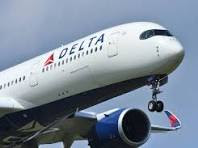NWA Invented it! Delta Buried it?
Because of this technology, Northwest dispatchers flight planned their aircraft around the turbulence, even at the added fuel expense. Never did I experience such an unexpected surprise as Singapore Airlines, at NWA. Then we merged with Delta and they, the proud owners of this technology, decided not to use it. Why? Because, it's far more expensive to flight plan an aircraft 200 miles around something (clear air turbulence) that can't be seen. Money over safety appears to be an industry standard.
Until it does!
Never had I experienced unexpected turbulence at NWA, but I did twice at Delta. I was on one flight when unexpected wind slammed us so hard the airspeed shot to redline. The captain, pilot flying, pulled the speed brake so fast, that he captured it. Another time, we were many thousands of feet above the cloud tops that looked like a valley below, the moon illuminating hundreds of miles in each direction. A quite and peaceful night. Nothing forecast, that we knew about. And without warning it felt like a sledgehammer slammed into our plane. As fast as I could, the seatbelt sign went on, and we shook for only a few moments, and then everything felt silent. Thankfully nobody was hurt. But we flew on edge, the remainder of the night, wondering what else was out there.
TPWA was invented in 1957 and improved upon as the years passed, as all good technology is. But after the merger with Delta, overnight we were flying into turbulence that we had never experienced at NWA. The question was why. But those from NWA knew that answer.
A Message To The Public:
Don't let Anyone Fool You...
There is technology to see and avoid turbulence.
Whether or not they use it, is another story.
And if they simply flew through a Thunderstorm, they had the technology to avoid that too!
Enjoy the Journey and remember to buckle up!
Dr. Karlene Petitt
PhD. MBA. MHS.
A350, B777, A330, B747-400, B747-200, B767, B757, B737, B727




Is it possible for dispatch to alert crews in most cases to clear air turbulence or at least to the potential presence of CAT? I know there has been improved technology between flight dispatch and the cockpit over the years (ACARS, SELCAL).
ReplyDeleteThey could. But they really should dispatch and route the flight around the area in the first place. But this technology was in place for years. Back in the day, everyone always asked where was Northwest flying, because other pilots knew we had this too. But, Delta shelved it. And of course it was improved upon and could be used. But it's not.
DeleteMy met report always gives the Flight Level at and above which CAT is expected. The entire Met report warns you of icing, lightning/thunderstorm, freezing level etc. A meticulous flight planning and execution can always avert such situations.
ReplyDeleteIn the good old days we were rerouted around the CAT... and now planes are dispatched right through the middle of it.
DeleteThere is…. It’s not radar, it’s not voodoo. It’s the wind and temperature charts in concert with the Significant Prog Chart FL250-FL630. I would be surprised how many actually are aware of this chart. As well as Advisory CIrculars from the FAA website… AC 00-24C - Thunderstorm Avoidance as well as AC 00-30C Clear Air Turbulence Avoidance. 2 of my greatest references during my 40+ years as a air carrier pilot. I still impart the importance of this information on this subject matter to my students and colleagues.
ReplyDeleteMany pilot don't understand their airplanes today... and weather? That is a foreign concept.
ReplyDelete